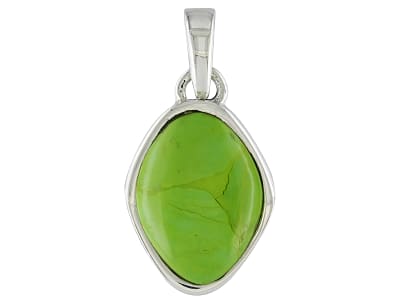Gaspéite is a bright grass-green to olive or yellowish green gemstone that often shows brown veining. It was first discovered near Mount Albert, Gaspé Peninsula, Québec, Canada. Most material now comes from Australia. It is a nickel carbonate and a member of the calcite group. It is often found as an intermediate material with magnesite. If the material contains more magnesium, then the stone is considered magnesite and is often called lemon magnesite in the trade. If the material contains more nickel, then it is called Gaspéite. It is found as an aggregate of rhombic crystals or massive concretions. This stone is commonly carved into artistic sculptures. This stone can be faceted or cut as cabochons and set in jewelry. It is a popular material in Southwestern inlay jewelry. It has also been found as an inclusion in chrysoprase from Tanzania.
General Information
LWUV: Bluish white or white
Gaspéite Colors
-
 Green
Green
Alternate Names
Gaspéite, lemon magnestite, Allura
Countries of Origin
Tanzania, United Republic Of; Japan; United States of America; Kazakhstan; Bosnia And Herzegovina; Spain; Greece; Canada; Unknown; Italy; South Africa; Zimbabwe; Australia; Germany
History
Gaspéite was first reported in 1966. It was found when the New Jersey Zinc Exploration Co. (Canada) were bulldozing a road at Mont-Albert, La Haute-Gaspésie RCM, Gaspésie-Îles-de-la-Madeleine, Québec, Canada. A two-foot vein of the material was found in siliceous dolomite of Diddle Silurian age. Gaspéite was later found in Australia, and it was introduced into the gem market about 1994.
Care
Gaspéite is soft so be mindful of scratching. It is easily attacked and dissolved by acids such as vinegar. Avoid abrasives, ultrasonic, solvents and heat.
